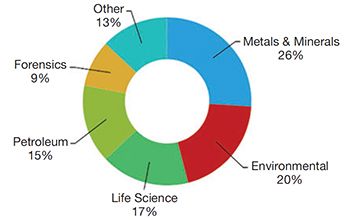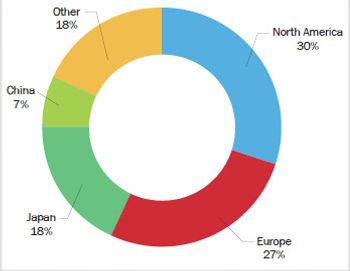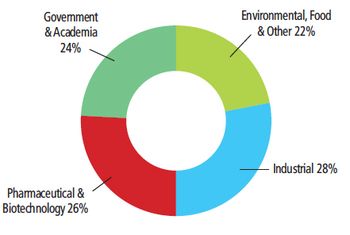
- Spectroscopy-07-01-2010
- Volume 0
- Issue 0
Market Profile: X-Ray for Security Applications
X-ray wavelengths correspond to both atomic energy levels and interatomic spacings, enabling X-ray fluorescence (XRF) and X-ray diffraction (XRD) in laboratories.
X-ray wavelengths correspond to both atomic energy levels and interatomic spacings, enabling X-ray fluorescence (XRF) and X-ray diffraction (XRD) in laboratories. But nonscientists are more likely to be familiar with technology that makes use of the penetrative power of X-rays, whether in the dentist's chair or in the security line at the airport. Security applications for X-ray technology now represent a $1.5 billion business, and many of the products go beyond simple imaging to better detect and identify potential threats.
One of the most advanced uses of X-rays is in computed tomography (CT), which provides three-dimensional images of scanned items. CT-based security systems are primarily used in aviation for baggage and cargo scanning. Some of these CT systems also incorporate XRD to better identify explosives or other chemical hazards.
X-ray security market demand by product type for 2009.
Even traditional X-ray imaging systems can offer greater analytical capabilities. Many newer systems offer dual energy analysis, in which two detectors are used, with a filter between them that transmits only the high-energy X-rays. By comparing the differential absorption of high- and low-energy X-rays, the system provides better discrimination of low atomic number materials, including explosives and other organic contraband.
Another method for imaging such materials is by detecting backscattered X-rays. This technology forms the basis of the new backscatter portals for passenger screening that will likely become a common sight at airports in the near future. Although privacy issues continue to make backscatter portals controversial, the market for them should more than double in 2010.
Some of the foregoing data were extracted from SDi's market analysis and perspectives report entitled "Chasing Disaster: Analytical Instrumentation for Security and Related Safety Applications," July 2010. For more information, contact Michael Tice, VP of Consulting Services, Strategic Directions International, Inc., 6242 Westchester Parkway Suite 100, Los Angeles, CA 90045, (310) 641-4982, fax: (310) 641-8851, www.strategic-directions.com.
Articles in this issue
over 15 years ago
Productsover 15 years ago
2010 Pittcon Product Review: Addendumover 15 years ago
Mass Spectrometry–Mass Spectrometry Retrospectiveover 15 years ago
DXC 2010: Going Green in the Rockiesover 15 years ago
Atomic Absorption: Feeding the Food Safety Marketover 15 years ago
CMOS Technology for Scientific Imagingover 15 years ago
Vol 25 No 7 Spectroscopy July 2010 Regular Issue PDFNewsletter
Get essential updates on the latest spectroscopy technologies, regulatory standards, and best practices—subscribe today to Spectroscopy.





